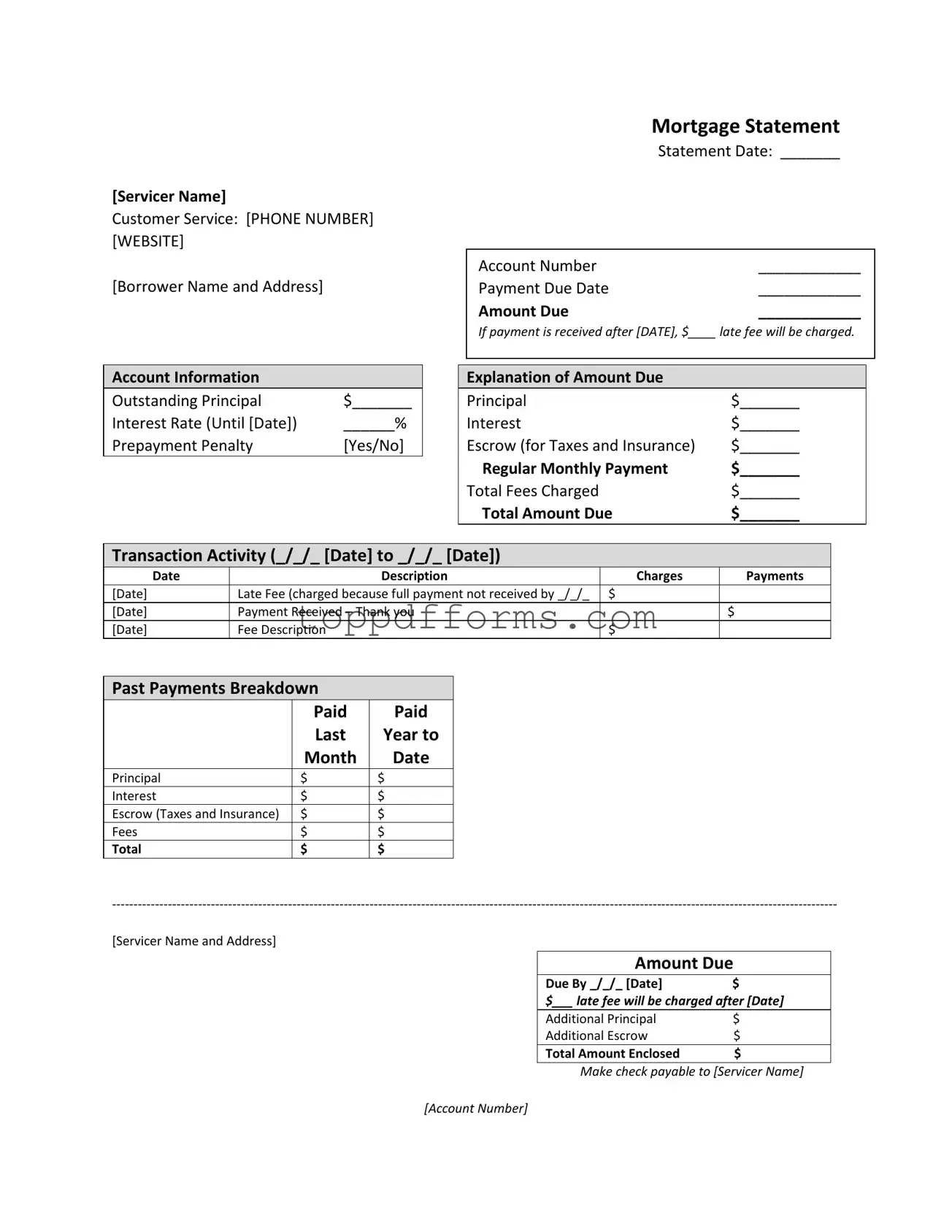What is a Mortgage Statement?
A Mortgage Statement is a document provided by your mortgage servicer that details your current mortgage account status. It includes essential information such as the amount due, payment due date, outstanding principal, interest rate, and any fees that may apply. This statement helps you understand your payment obligations and track your mortgage activity over time.
How can I find my account number on the Mortgage Statement?
Your account number is prominently displayed on the Mortgage Statement. Typically, it is located near the top of the document, right under your name and address. This unique number is crucial for identifying your mortgage account, especially when contacting customer service or making payments.
What happens if I miss a payment?
If a payment is not received by the specified due date, a late fee will be charged. The Mortgage Statement will indicate the amount of the late fee and the date after which it will be applied. It is important to stay informed about your payment deadlines to avoid additional charges and potential negative impacts on your credit score.
What does the section on Transaction Activity represent?
The Transaction Activity section provides a detailed history of your mortgage payments and any charges incurred during a specified period. It includes dates, descriptions of transactions, amounts charged, and payments received. This section is valuable for tracking your payment history and understanding how your account balance has changed over time.
What is the significance of the Escrow amount in my Mortgage Statement?
The Escrow amount reflects funds set aside for property taxes and insurance premiums. Your mortgage servicer collects these funds as part of your monthly payment to ensure that these expenses are covered when they come due. The Mortgage Statement will break down this amount, helping you understand how much of your payment is allocated to escrow versus principal and interest.
What should I do if I am experiencing financial difficulties?
If you find yourself facing financial challenges, it is crucial to reach out to your mortgage servicer as soon as possible. The Mortgage Statement may provide information about mortgage counseling or assistance programs available to help you navigate your situation. Early communication can lead to options that may prevent foreclosure and help you maintain your home.
Can I make partial payments on my mortgage?
While you can make partial payments, it’s important to note that these payments are not applied directly to your mortgage balance. Instead, they are held in a separate suspense account until you pay the full amount due. To ensure your mortgage account is credited properly, it is advisable to pay the total amount due as indicated on your Mortgage Statement.
How can I contact customer service for questions regarding my Mortgage Statement?
Your Mortgage Statement will include the servicer's name, customer service phone number, and website. If you have questions or need assistance, you can reach out to customer service using the provided contact information. They are there to help you with any inquiries related to your mortgage account.
